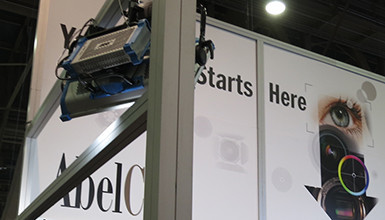Sony E PZ 18-110mm
| Zoom Factor | MSRP Price | Weight | Lens Mount | T* | Focus Rotation | Iris Blades | Front Diameter | Minimum Focus |
| 6.1x | $3,499 | 2.4 lbs | Sony E | F4 | Hard stops in MF (no degree noted) and Floating in AF | 7 | 95mm – threaded | 3.1’ in MF / 1.3’ in AF |
BUILD AND FUNCTIONALITY
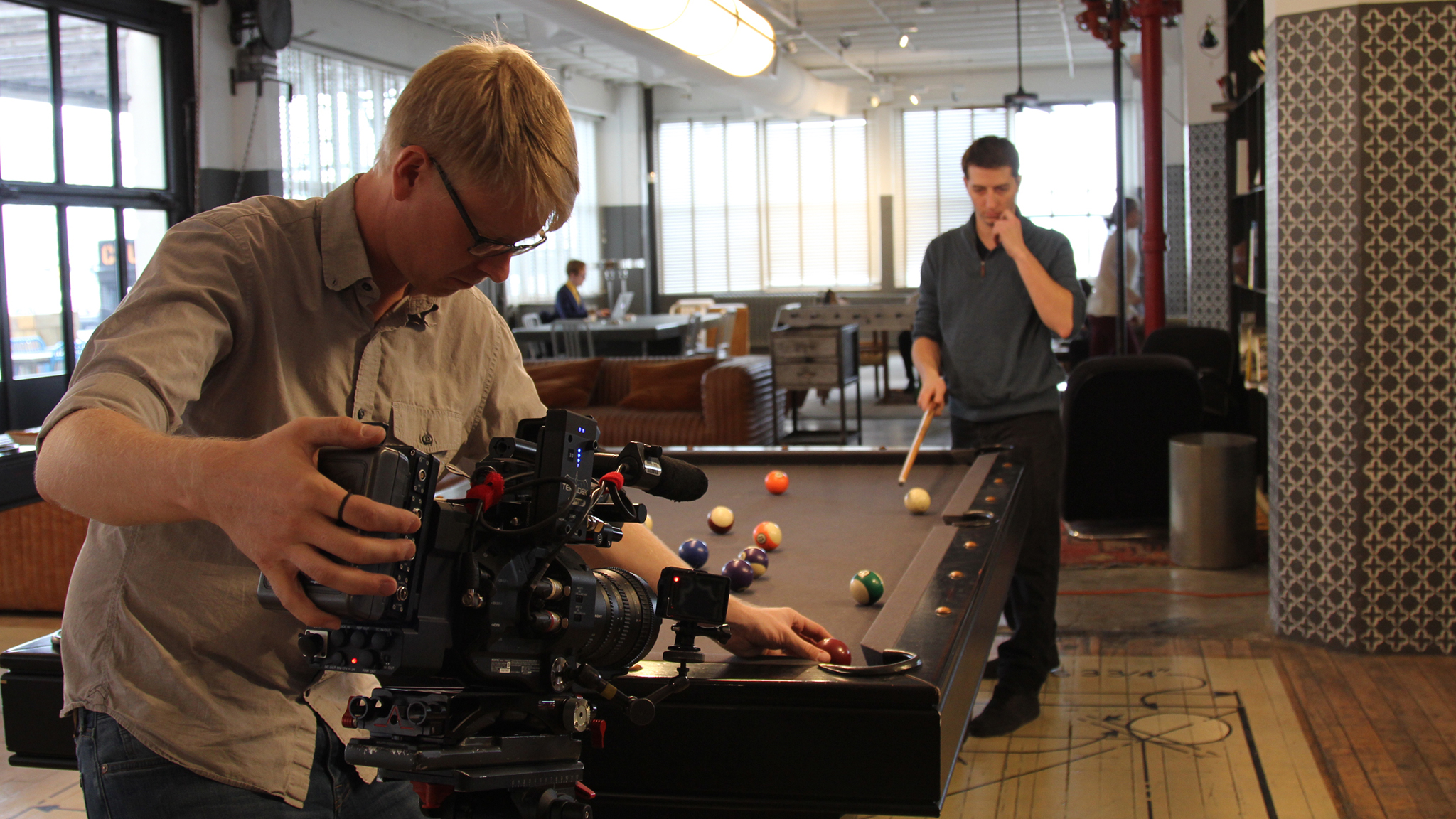
Out of the gate, shooting with the combination of the Sony FS7 and 18-110 reminded me of shooting with the Sony EX3 (which I did a lot!). The zoom range of this lens is great, covering you for most shooting situations. The lens has the second longest zoom range of any lens in the test, behind the Canon 17-120. This is a great choice when you don’t want to carry additional lenses. The lens build feels very much like the fixed lenses on video cameras from years back. The lens is made of plastic and has the mechanical/electronic feel of lenses from the era. The lens is very light at 2.4 pounds, and balances perfectly with cameras like the FS7. There are a number of features with this lens that makes it enticing for documentary environments or any other shooting situations where you need speed and flexibility with a lens.
I like to call this a “hybrid zoom lens.” It has some of the features of a traditional cinema lens like hard stops in manual focus, a 0.8-pitch geared focus ring, fully manual focus, zoom, and iris rings, and parfocal focusing (although technically electronic). It also has many of the features we’ve come to love with electronically controlled lenses as well, like a zoom rocker, Optical Steady Shot, auto iris and auto focus.
The zoom rocker isn’t on a servo grip like other lenses, but rather located on the “operator” side of the lens. The servo can be switched on and off directly below the rocker. Above the rocker is a switch to turn on and off the Optical Steady Shot. On the “assistant” side of the lens, there are switches to lock the iris (interesting idea) and to click the iris, I guess for when you want to use this on a still camera like the Sony a7S.
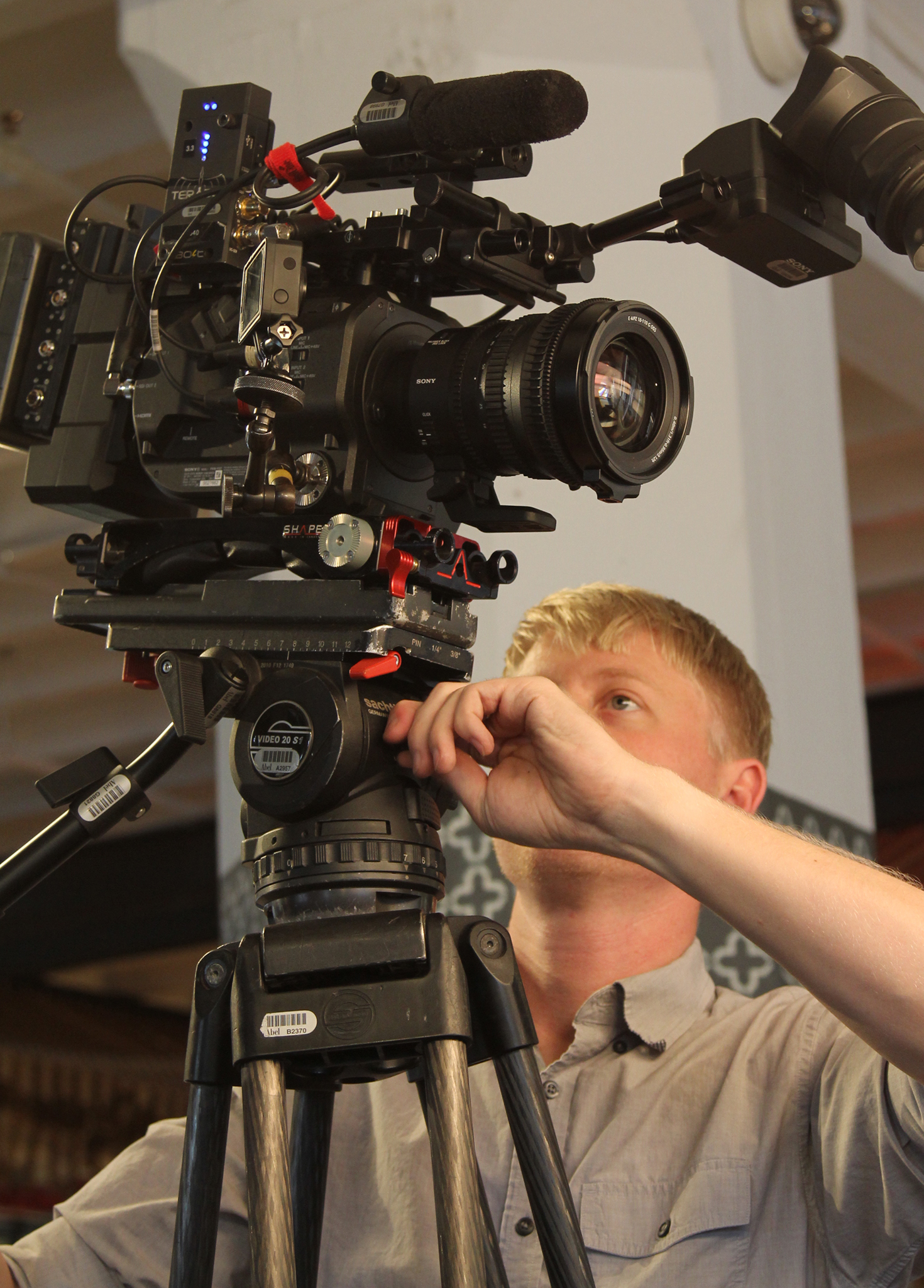
I mentioned that the lens is parfocal, and this is theoretically true. The lens does hold focus from the wide end to the tight end. But I found when doing a snap zoom there is actually a visual lag in focusing, since it is controlled electronically. What happens is since the physical zoom is faster than the electronics controlling the focusing, you lose focus in the middle of the zoom. I say this with an asterisk attached, since the effect is only noticeable for a brief second before the focus catches up to the zoom, finding itself by the time you land the zoom. Just something to be aware of if you do a lot of quick snap zooms.
The lens comes with a removable shade that also acts as a lens cap, with shuttering flaps that close in front of the lens. The lens itself has a threaded 95mm front for use with filters when the shade is not attached.
GEOMETRY
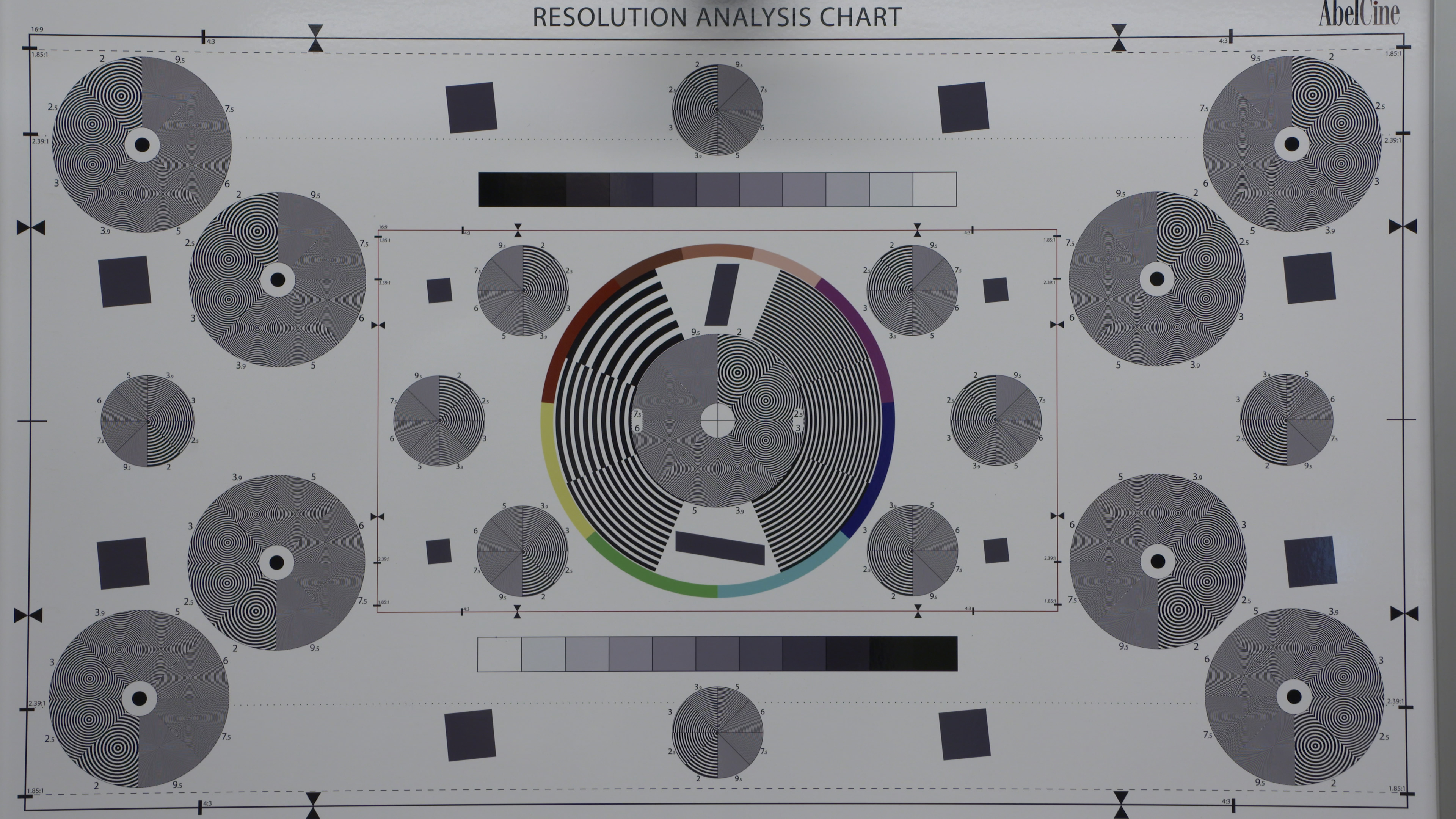
When we shot the Sony 18-110 on the resolution chart, you can see there is just the slightest amount of pincushioning to the border box of the chart. In the interview frame at 18mm, there is no discernable distortion to the geometry of the frame.
EDGE BRIGHTNESS
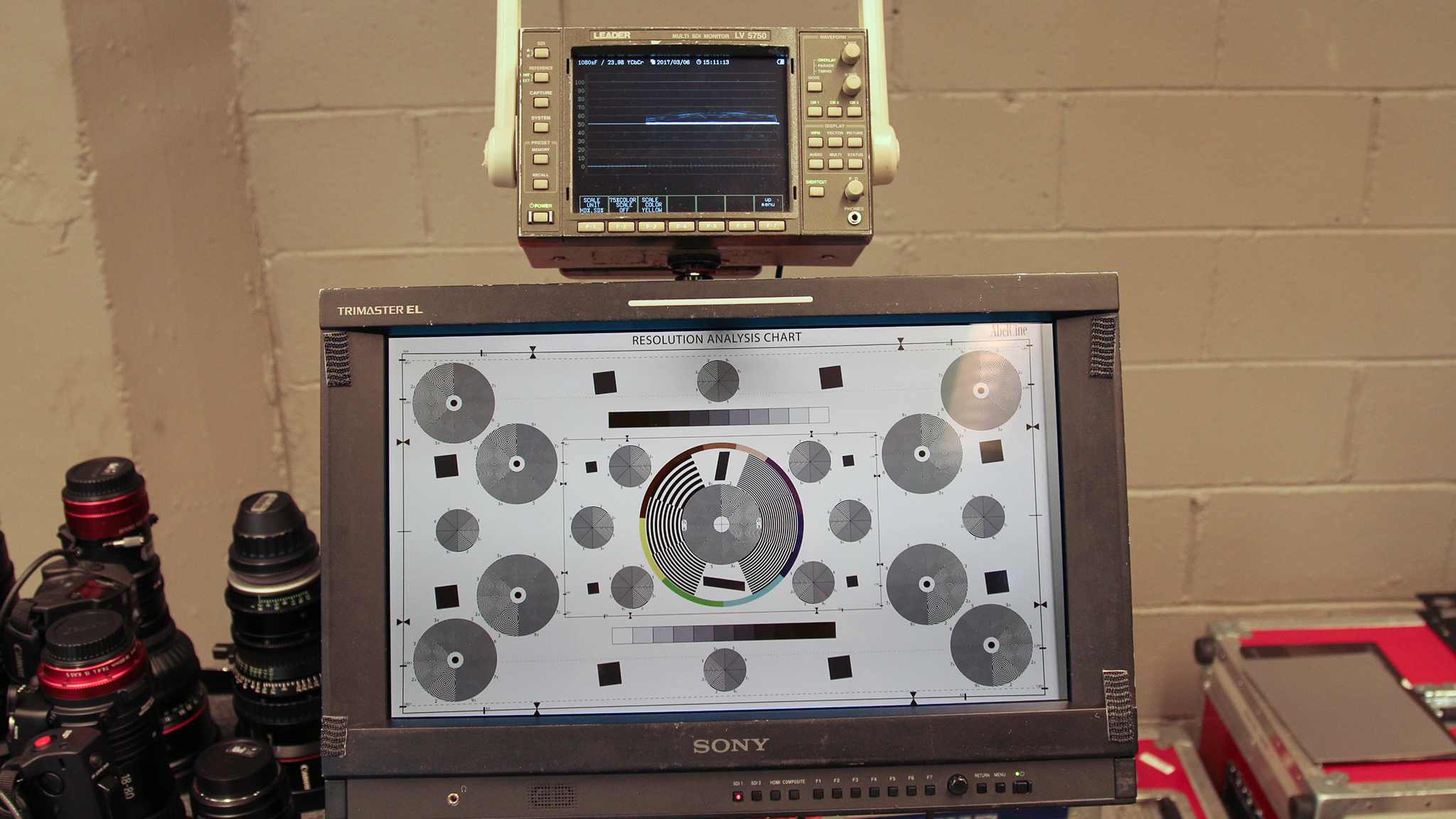
To test the edge brightness of each lens, we filmed the resolution chart at all f-stops from wide open (f4) to f11 and examined the curve of the white on a waveform monitor. With this lens, there is a negligible amount of falloff at f4 and f5.6, which then completely levels out at f8. Overall, I would say the lens handles very well in this department. Click here to download full resolution screen captures of all f-stops.
SHARPNESS
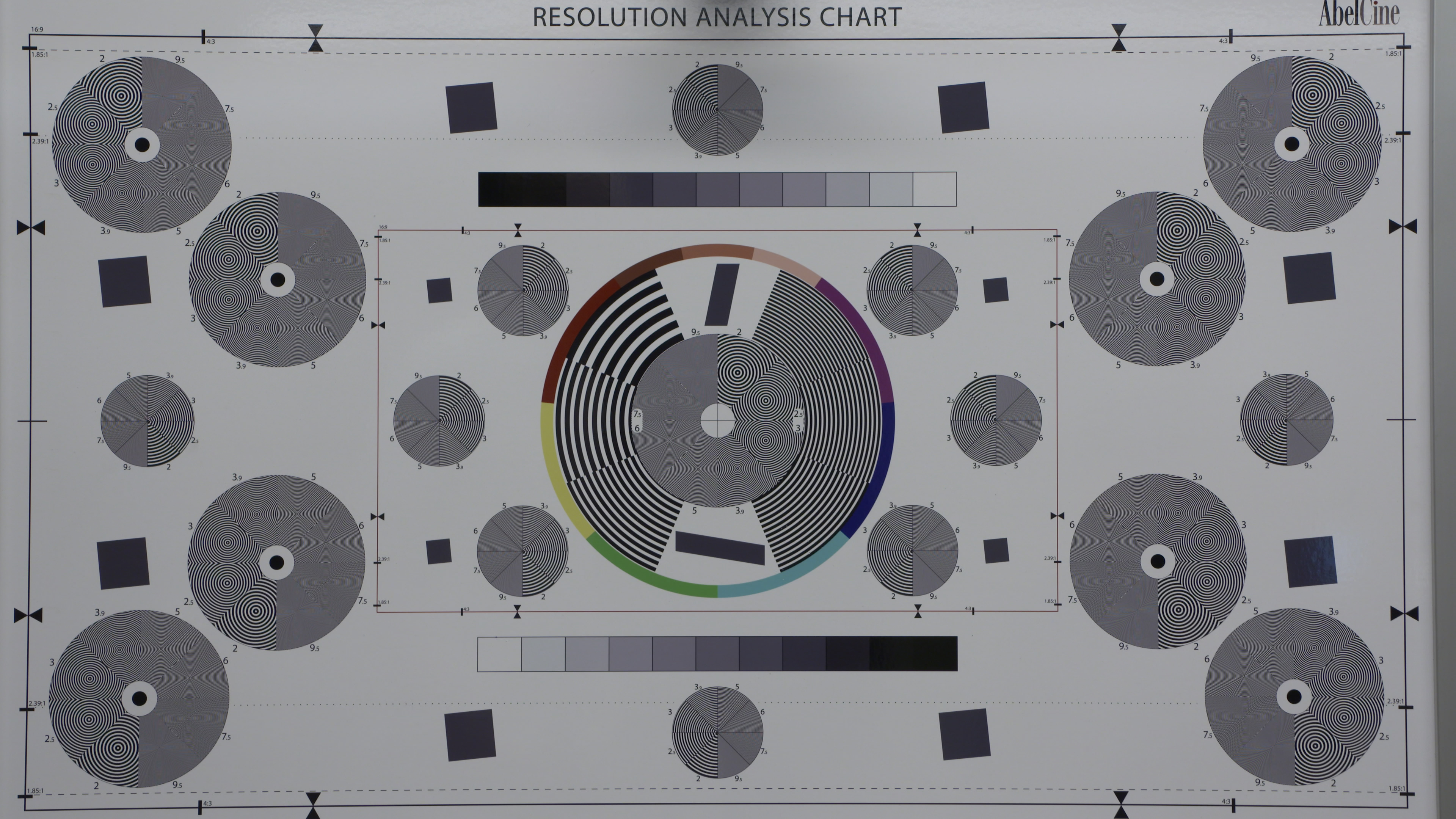
Again, shooting the Sony 18-110 on the resolution chart, we found it is a very sharp lens overall, from wide open at f4 all the way to f11. Download full resolution screen captures of all f-stops here.
CHROMATIC ABERRATION
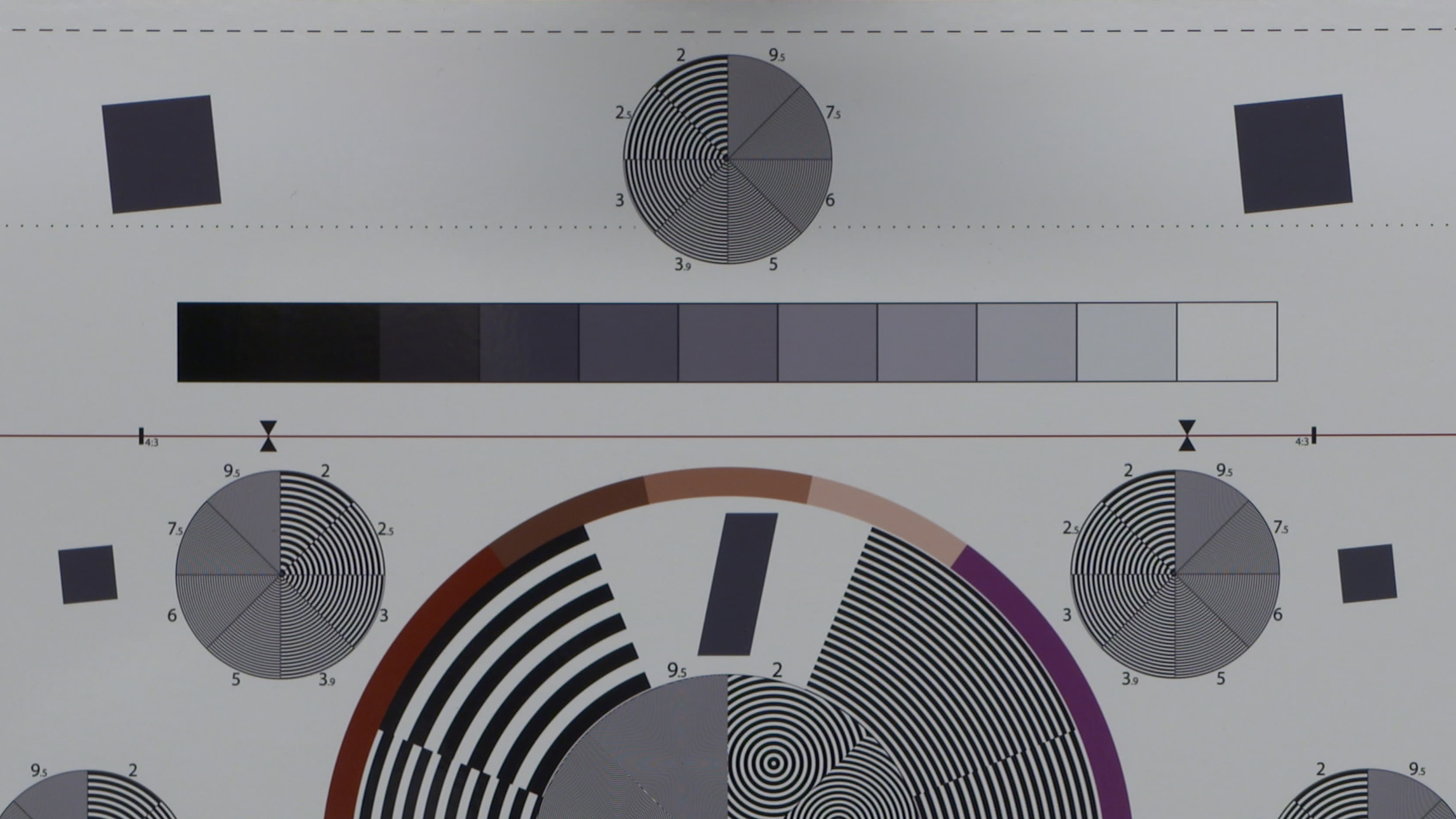
If we look at the off-kilter boxes on the resolution chart, we can look for chromatic aberration, or color fringing. There is the slightest amount of red fringing on the sides of the boxes, but more obvious blue fringing on top.
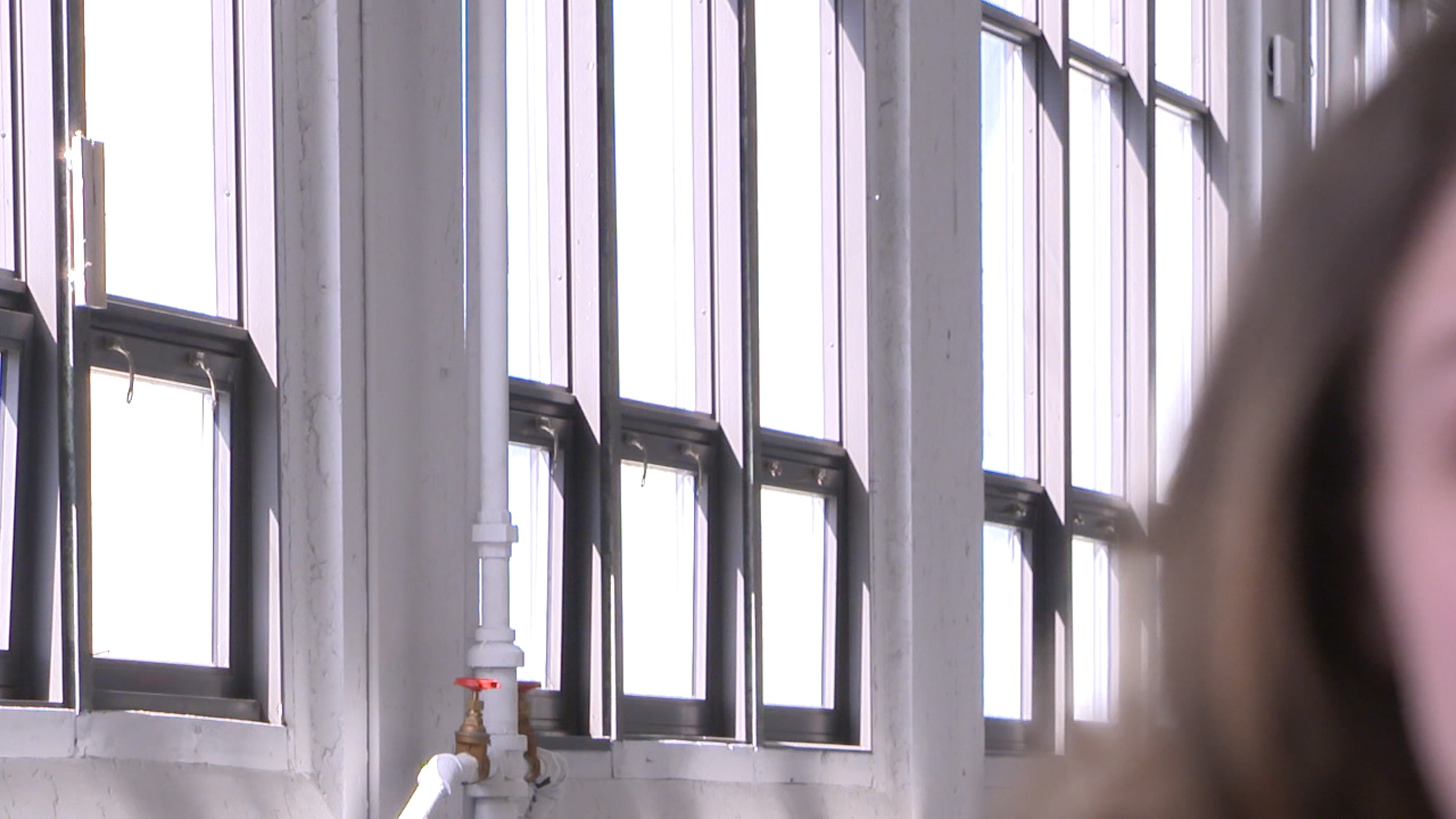
Interview frame at 300%
If we check this against the interview frame, enlarged 300% at the windows, you can some blue fringing on the vertical sides of the window frame, but next to no red fringing in the scene.
COLOR
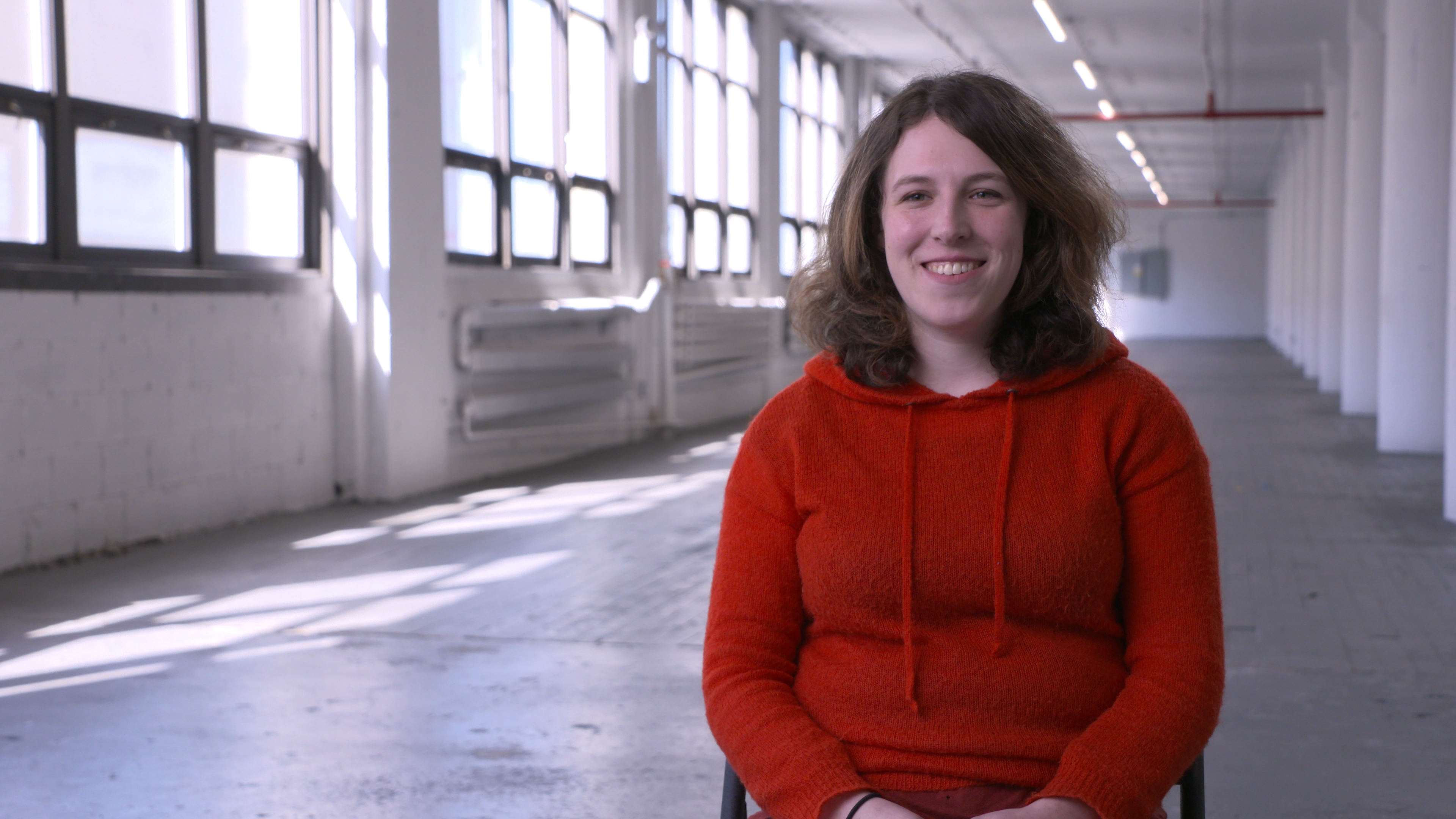
To test the color of the lens, I first white balanced the camera without a lens attached. This read the ambient light hitting the sensor to give us a clean, pure white. From there, I mounted the lens and filmed a white card. When reading the RGB waveform and vectorscope, you can see the color properties of the lens. The Sony 18-110 is fairly neutral in color overall, with the dot on the vectorscope sitting almost on top of the center crosshair, but it is lifted slightly towards the skin tone line, indicating a touch of warmth specifically to the skin tones. You can also see this on the RGB waveform, where the red is lifted slightly while the blue channel is reduced, leaving the the green channel sitting comfortably in the middle. In the interview frame, you can see that the lens has nice, solid contrast as well. Click here to download larger, detailed examples.
BREATHING
We tested the lenses for breathing in two different setups. The first is in the interview frame at both 35mm and 50mm. There is very minimal breathing with this lens at 35mm, and almost none at 50mm.
The second test was at the pool table, at the wide and tight ends of the lens. Here is where the lens really shines. When you have the lens in an environment with easy to read vertical lines on the edge of frame, it’s easy to nitpick the breathing. But when tested in a real world scenario with movement and the attention directed at something in motion, you can see there is virtually zero breathing with lens at either the wide end or the tight end of the lens. This is very impressive.
MINIMUM FOCUS
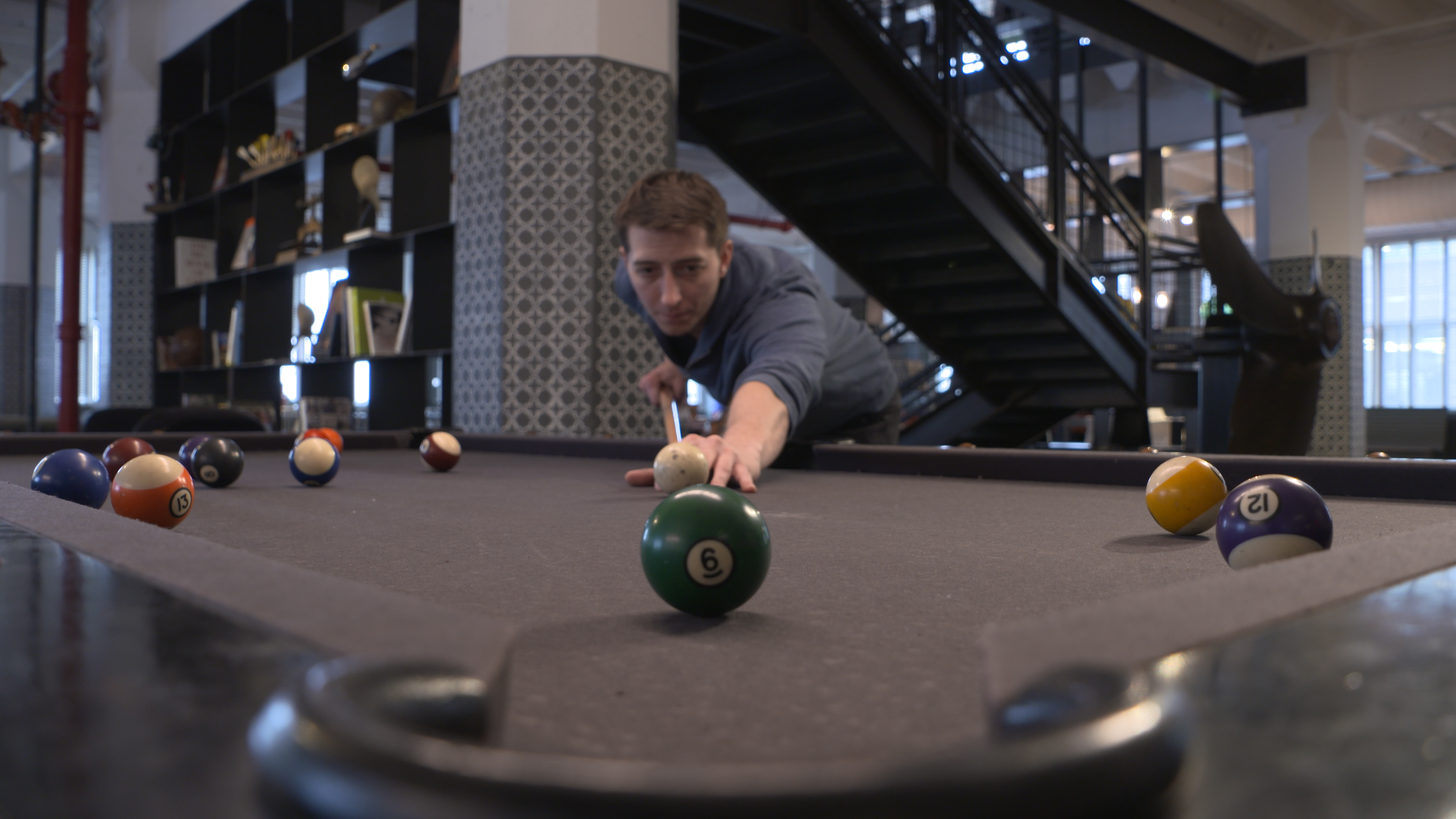
The lens offers two different minimum focus distances. When you are in Manual Focus mode, the minimum focus is limited to 3.1’. Since the lens isn’t particularly long physically, the minimum distance to the object isn’t so great. Especially at 18mm, the effect keeps you pretty far away from the object. But when you switch into Auto Focus / Manual Focus, the minimum focus distance drops significantly to 1.3’ when at the wide end of the lens. The minimum focus goes back to the original 3.1’ at the tight end of the lens. This effectively puts you in Macro focusing at 18mm. When this mode is engaged, you can get very impressive close focus shots.
BOKEH
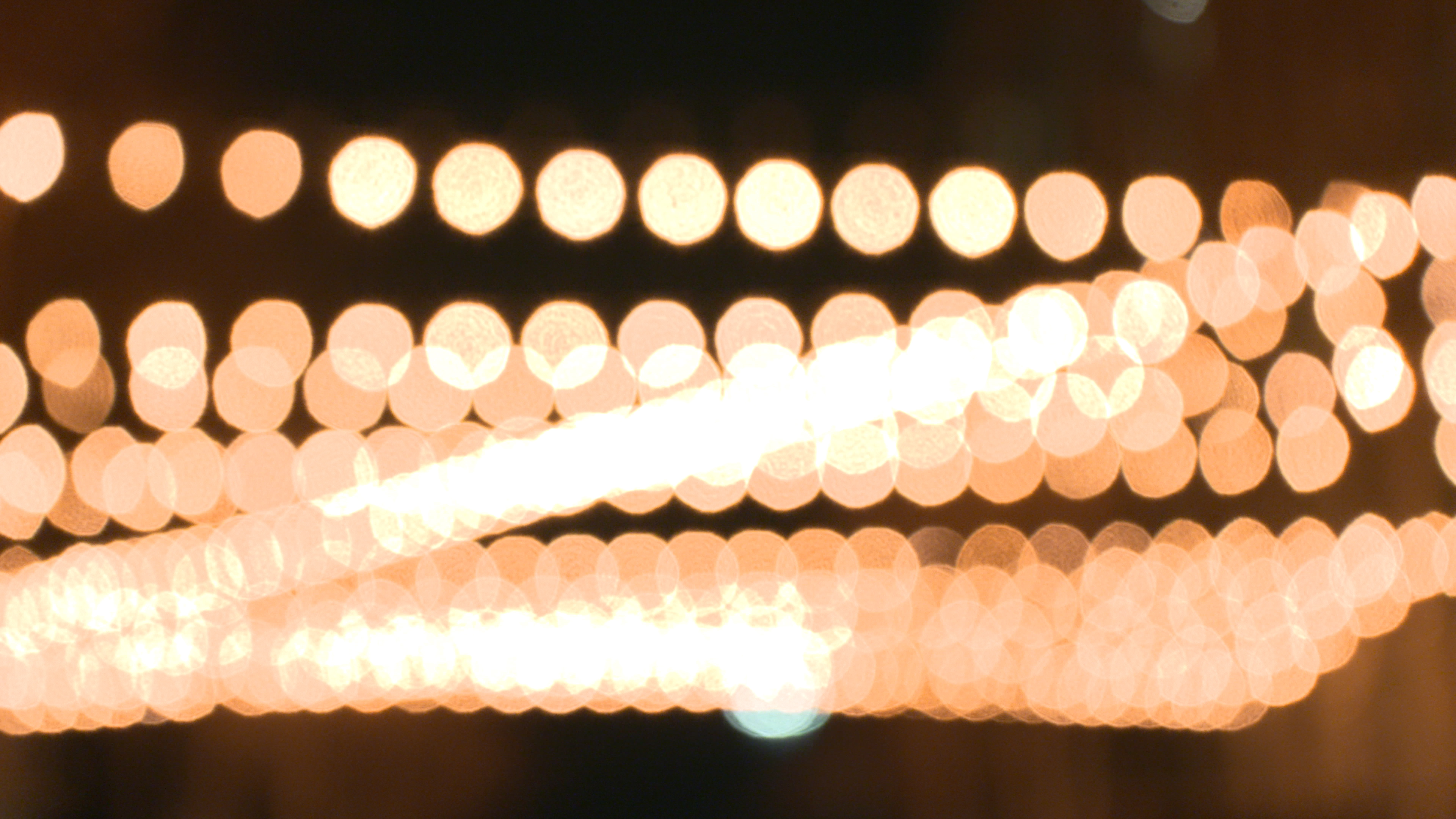
Looking at the night exterior shot we can judge how the lens renders out of focus elements, like the overhead cafe lights. Here you can see the bulbs are not smooth and round like we’ve seen with nearly every other lens we tested. Rather, the bulbs are jagged around the edges. You can actually count the number of edges, which is seven – the same number of iris blades in the lens. Normally shooting wide open, you get the smoothest bokeh of any aperture, but here we still get a jagged edge.
You can also see that there is some distortion to the bulb on the edges of frame. The bulb is rotated and vertically compressed on the inside of the image, but not on the outside. The jaggedness still remains, just becoming more elongated. This distortion has been seen on a few of the other lenses in the test.
LENS FLARES
Overall, the Sony 18-110 is incredibly flare resistant. You can feel the lens coating fighting hard to keep that light from scattering throughout the lens. Because it’s so resistant to flares, the flares that do exist are pretty boring in my opinion. At the wide end of the lens, there is a sharp 14-point star around the light, encompassed by a faint halo. The flare itself is very small, with minimal elements and little color. There is no shape or quality to the flare trail. At the tight end of the lens, we see the flare loosen up a bit. There is more purple coloring to the star around the light and some greens and blues in the flare elements, but the sharpness to the star remains. Even in the exterior scene, there is sharp starring around the tiny little bulbs.
Click to see how the flares appear in scene at both the wide end and the tight end of the lens.
CONCLUSION
The Sony E PZ 18-110 is a great all-around zoom lens that ticks all the boxes. I find this to be the perfect everyday lens for cameras like the Sony FS7, FS5 and a7S. The combination of cine characteristics like smooth manual controls with the electronic features like a zoom rocker and Optical Steady Shot make this a great lens for shooting weddings, events, and corporate videos.
The lens is very sharp at all apertures and has next to no edge brightness falloff. There is minimal chromatic aberration, certainly better than some of the much more expensive cinema zooms on the market, and has very nice color that enhances the skin tones while also yielding nice contrast. The lens has little to no breathing, allowing the viewer to focus on your beautiful shot rather than on the common problem of other lenses in this category. The minimum focus in manual mode leaves something to be desired, but in AF/MF mode, the “macro” focusing at 1.3’ is incredibly useful. The bokeh is unfortunately not the smooth, beautiful look you want, but rather sharp and jagged, even wide open. The lens is incredibly flare resistant – a good thing – but because of this, rather boring in appearance.
I hope you found this lens test useful, and be sure to check out the other lenses in the Behind the Lens – A Look at Documentary Zooms series.

















